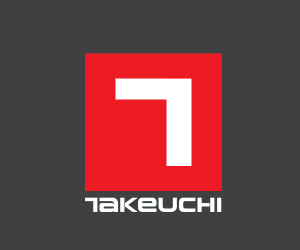As well as provisionally requiring Lafarge Tarmac to sell a cement plant (and accompanying ready mix concrete (RMX) plants if necessary) to facilitate entry of this new producer, the commission is also proposing to limit the flow of information and data between cement producers.
Additionally, it is looking to increase competition in the supply chain for ground granulated blast furnace slag (GGBS-a partial substitute for cement) by ordering the sale of suitable production facilities by both Lafarge Tarmac and Hanson. This remedy is subject to further consultation on the GGBS market.
The measures are outlined in a summary of its provisional decision on remedies, the penultimate stage of the investigation into the supply of aggregates, cement and RMX. In May, the Competition Commission (CC) published its provisional findings, which found that both structure and conduct in the cement sector limits competition by aiding coordination between the three largest producers (Lafarge Tarmac, Cemex and Hanson) and is likely to be resulting in higher prices for all cement users.
The investigation applies to Great Britain only, and not to Northern Ireland.
In an addendum to the provisional findings, published today for consultation, the CC also identifies competition issues in the supply chain for GGBS. The commission has not identified any problems with the markets for aggregates or RMX.
Professor Martin Cave, CC deputy chairman and chairman of the inquiry group, said: “As we indicated in May, both the scale of the problems we found in the GB cement markets and the way that they stemmed from established structure and conduct meant that extensive measures were likely to be necessary to address them. The best way to disturb the balance of a market where producers have focused on retaining their respective market shares rather than competing is to create the opportunity for a major new entrant.
“Being able to buy a cement plant-and a number of accompanying RMX plants if necessary-will give the new producer a foothold in the GB cement markets and will increase the number of GB cement producers, thereby disrupting the established patterns in these markets.
“In addition to this, we will tackle the channels which facilitate the flow of information between the GB cement producers, such as price announcement letters and industry data. For a long time, these channels have given producers too much awareness of how their counterparts are performing and their future pricing strategy.

“We think that these measures will go a long way towards establishing a more competitive market for customers. The fundamental importance of cement to the construction and building sectors and the amount of such work that is funded by the public purse only underlines the need for these actions.”
Summary of the remedies:
· Lafarge Tarmac should be required to choose between divesting either its Cauldon or Tunstead cement plant. The purchaser of the divested cement plant should be able to acquire a limited number of RMX plants from Lafarge Tarmac subject to the purchaser's total internal cementitious requirement being capped at 15% of the acquired cement production capacity. The buyer would have to be approved by the CC and not be one of the GB's existing cement producers
· Restrictions on the publication of GB cement market data. Data currently published by the Minerals Products Association (MPA) and the Department for Business, Innovation & Skills should be delayed by at least three months from the time period to which it refers before it can be made public. GB cement producers will also be prohibited (with a small number of specific exceptions) from providing their sales and production data to any other private sector organisation.
· GB cement suppliers will be prohibited from sending generic price announcement letters to their customers. Instead, they should send letters that are specific and relevant to the customers receiving them.
· Subject to further consultation on the GGBS supply chain, Hanson should divest two of its GGBS plants and Lafarge Tarmac should divest two of its GBS plants, again to a purchaser approved by the CC but not to another GB cement producer. (GBS is a material made by water-cooling of the slag emerging from iron blast furnaces and can be ground to produce GGBS.)
There are five major producers of heavy building materials in the UK: Aggregate Industries, Cemex, Hanson, Hope Construction Materials and Lafarge Tarmac. Hope is a new firm established in January 2013 after it bought cement, aggregates and RMX assets that the CC had required Anglo American (the owner of Tarmac) and Lafarge to divest following an inquiry into the Anglo American/Lafarge joint venture last year. Aggregate Industries does not produce cement in the UK but all five have significant RMX operations.
The CC is required to publish its final report by 17 January 2014 and is now inviting further responses by 29 October 2013. To submit evidence, email aggregates@cc.gsi.gov.uk
Got a story? Email news@theconstructionindex.co.uk


